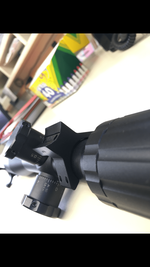I have a couple of good scopes that I recently purchased - One is a Zeiss 4x24 50mm and one is an Athlon with a 34mm tube and a 56mm objective. So these are both pretty big and heavy - more than I have dealt with in the past. These are going on a 6.5 Creedmoor and a .308
My question is this.....in mounting these scopes, do I need to use Loctite on the screws, and do I also need to lap them? I have seen some videos on Youtube that suggested you do not need to do either of these things, and long as you tighten the mount and rings according to the manufactures suggested limit. I would prefer NOT to use Loctite (for fear of having the screws becoming "stuck", and me stripping the screw when I try to remove it), and I would prefer NOT to lap the scopes (due to the mess caused by lapping), but if that is really the right way to do it, I will do so. My other cause for not wanting to do these things is that it makes the scope a "fixed system", meaning it is much hard to make scope adjustements when you have used Loctite and lapping.
Would like to hear the thoughts of people who have shot a lot of rounds through their rifles and scopes and have a lot of field experience. Thanks as always in advance for any advice!!!
My question is this.....in mounting these scopes, do I need to use Loctite on the screws, and do I also need to lap them? I have seen some videos on Youtube that suggested you do not need to do either of these things, and long as you tighten the mount and rings according to the manufactures suggested limit. I would prefer NOT to use Loctite (for fear of having the screws becoming "stuck", and me stripping the screw when I try to remove it), and I would prefer NOT to lap the scopes (due to the mess caused by lapping), but if that is really the right way to do it, I will do so. My other cause for not wanting to do these things is that it makes the scope a "fixed system", meaning it is much hard to make scope adjustements when you have used Loctite and lapping.
Would like to hear the thoughts of people who have shot a lot of rounds through their rifles and scopes and have a lot of field experience. Thanks as always in advance for any advice!!!

